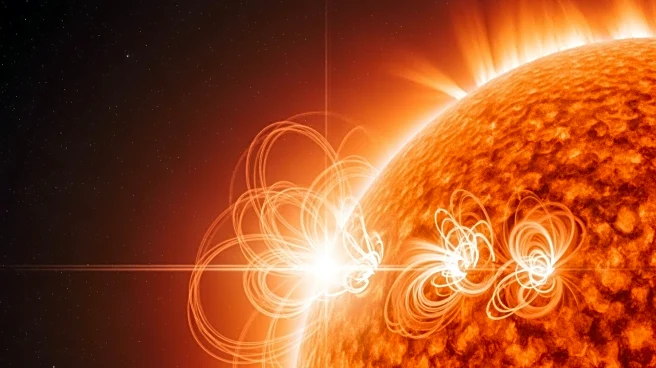What's Happening?
Scientists have made a breakthrough in understanding the Sun's corona, solving a 70-year-old mystery about its extreme heat. Researchers have observed small-scale torsional Alfvén waves in the corona, which
transport plasma and contribute to its high temperatures. These waves, previously hypothesized but not directly observed, twist through magnetic fields and help explain the transfer of energy from the Sun's surface to its outer atmosphere. The discovery was made using high-resolution imagery from the Daniel K. Inouye Solar Telescope in Hawaii, providing new insights into solar dynamics.
Why It's Important?
This discovery enhances our understanding of solar physics and the mechanisms driving the Sun's behavior. The findings have significant implications for space weather forecasting, as solar winds and coronal activity can impact satellite operations and power systems on Earth. By improving our knowledge of these processes, scientists can develop better predictive models, potentially mitigating the effects of geomagnetic storms. The research also validates theoretical models of solar dynamics, paving the way for further exploration of the Sun's complex systems.
What's Next?
Future research will focus on examining the mechanisms and distribution of these Alfvén waves across the corona. Scientists aim to refine their models and explore other theories about solar activity. The continued study of the Sun's behavior will contribute to advancements in space weather prediction and enhance our ability to protect technological infrastructure from solar-induced disruptions.













